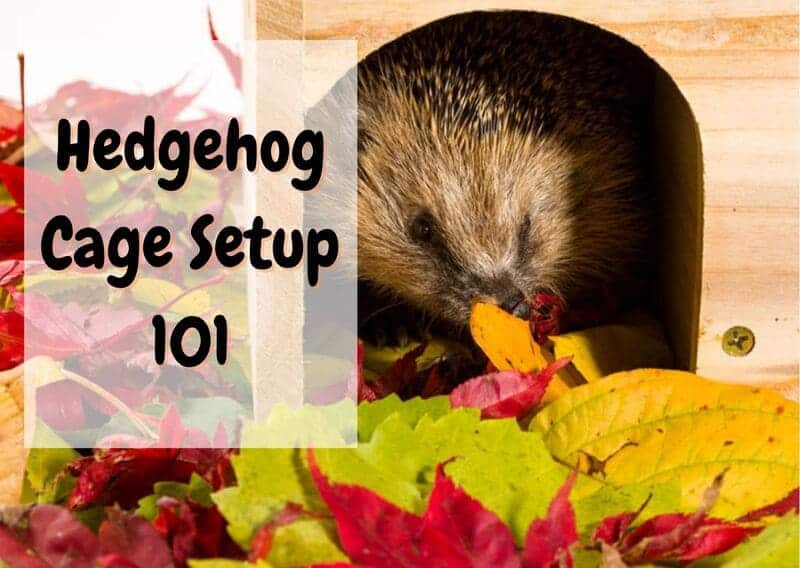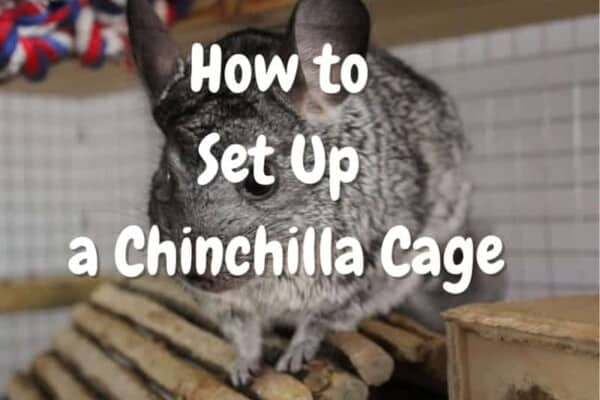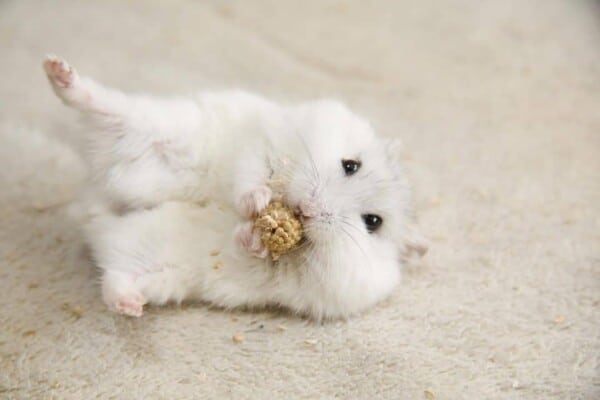Hedgehogs need plenty of roaming space since they enjoy wandering around in the wild. Their habitat will need to simulate this so they don’t get bored inside their cage. Here’s how you can create the perfect habitat that will keep your hedgehogs happy and active during the time they’re awake.
Hedgehog cage setup 101
1. Cage size
The hedgehog cage does need a minimum size that will make them feel they have adequate space to roam. This is what they do in the wild and will appreciate the extra space to explore, so having a 40-gallon tank is actually better. The physical size of a 40-gallon tank is often 3 feet long and is 18 inches wide and is 16-inches tall. This is ideal for both pygmy and normal-size hedgehogs since they can stretch their legs.
Because of its solitary nature and independent behavior, a hedgehog will prefer to be on its own in its cage. If you decide to have two hedgehogs, it’s a good idea to have a separate cage handy if they start to fight. This happens more often with two males that are dominant about food sources.
You can try pairing a couple of females together since they are more open to having a partner. It’s not 100% they will bond or get along all the time, but it’s not totally out of the question either. Unless you want to have hedgehog babies, this isn’t advised if you haven’t owned hedgehogs before.
2. Materials used
Aside from your cage which is made from metal or glass, the items that go into their habitat should be chew-proof. This means that you should avoid anything plastic that can be chewed. Your hedgehog will be curious about things in their cage and this will include chewing and nibbling on everything in there.
Choose items that include metal, glass, and ceramic materials that will be better inside their cage. They will last longer over the years and are less likely to be a choking hazard for your hedgehog.
3. Bar spacing
All pre-built cages have similar bar spacing that doesn’t vary much from brand to brand. Each bar has a three-inch space with three-quarters of an inch in between each weld. Your hedgehog won’t be able to get out but there is just enough room to poke its nose through the spacing.
You have to expect that the shavings will fall outside a cage from time to time as your hedgehog huff and puffs around. If you don’t want these shavings to get out, you can choose a glass aquarium instead. Just make sure that the top lid is secure enough so they can’t get out and has enough airflow.
4. Ramps and platforms
If you have a cage that is set up to include a second level, there should be a ramp they can walk up with little effort. A hedgehog isn’t the greatest ladder climber so a separate level works best if they can walk up a ramp instead. The ramp needs to be made from wood or metal and should be wide enough so they don’t fall off them.
5. Bedding
To keep dust levels very low, you can use Aspen and kiln-dried pine shavings inside their cage. These shavings aren’t going to be dangerous for them if they happen to eat them by accident either. This will also keep a hedgehog from sneezing or having breathing problems.
What types of accessories should I put in the cage?
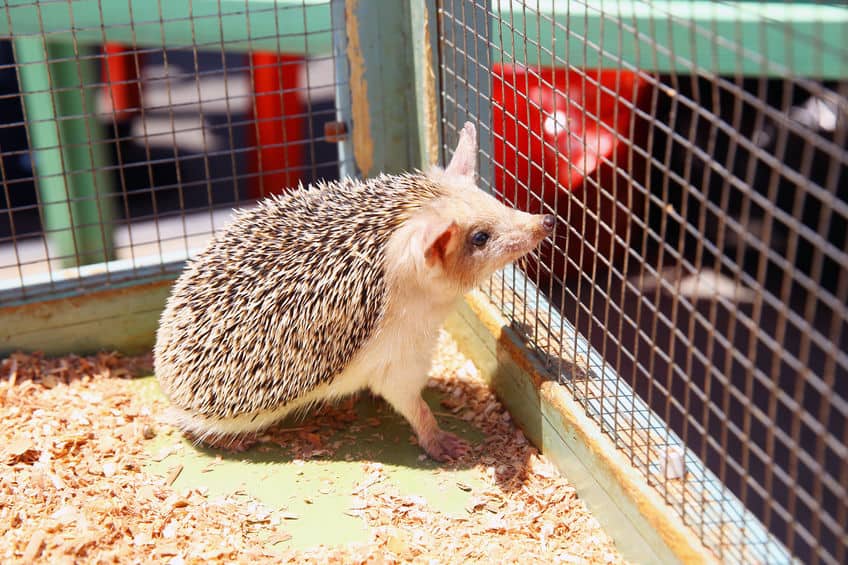
1. Hideouts
Hedgehogs are curious about exploring and won’t immediately want to hide in their hidey house unless it interests them. They might use it for a place that is a natural safety spot they can retreat to if they get spooked. These houses, huts, or structures can be made from wood, ceramic, or glass.
In the wild, hedgehogs will make any protective covering into a hideout if they are threatened. But if they can’t find anyplace to hide, they will ball up and make their quills stand out for defense.
2. Food bowls
Just be aware that your hedgehog will be walking over this bowl and can spill the food everywhere. This is fine if the food is dry kibble, but vegetables and fruit might get lost in the bedding and start to get moldy.
Having a food bowl or dish is fine hanging on the wall of a cage or inside their habitat. Just for the sake of having a cleaner cage, a hanging food shelf is a good idea. Some owners prefer to have a tip-proof bowl instead.
3. Water dispenser
Hedgehogs are also rather sloppy when it comes to water dishes and will trudge through them as they wander around their cage. This is why a water bottle that is hung on the edge of a cage won’t get dirty so easily.
What types of toys are good choices for a hedgehog?
1. Exercise wheel
This is always a good idea to have a wheel in their cage since this gives them plenty of exercise. This wheel needs to be sturdy enough that it doesn’t make much noise. If this wheel is made from metal, it needs to be well-oiled so it doesn’t squeak when it spins.
2. Exercise ball
If you can find an exercise ball large enough to house a hedgehog, you’ll need the largest ball that is available. You do have to check for a ball that doesn’t have slots that could catch their little nails and rip them out. Aside from that, they will love exploring your house. Exercise balls are best used outside of the cage unless you have a very large cage.
Do hedgehogs need chew toys?
Hedgehogs aren’t like rodents and don’t need to chew to wear down their teeth. This can happen naturally with the hard dry foods you give them. If you give them anything made from wood, it needs to be Aspen or Elm that are edible and not toxic if ingested.
DIY hedgehog cage 101
If you want to make a cage yourself, it can be made from plastic panels they can’t chew or edible wood including glue that isn’t going to be toxic, like Elmer’s school glue since this is free from toxins they might ingest. You can also simulate a forest floor with sticks and branches they can climb over and under. YouTube is full of excellent tutos on how to make a sturdy DIY hedgehog cage.
Where should I place the cage in the house?
Since your hedgehog is a nocturnal creature, it will be awake at night and make all sorts of noise. This can be a problem for you if you keep them in your bedroom and are trying to sleep when your hedgehog is wide awake.
If you want to have a designated spot where you will keep them, it should be in a quiet place. When a hedgehog sleeps during the day, they should be in an undisturbed room that is moderately dim. It doesn’t have to be completely dark in case you need to get something from that room.
Temperature and humidity
Depending on where you are living, the outside temperature can fluctuate in either direction depending on the season but the temperature where your hedgehog is kept should be a continual level that doesn’t dip below 65 to 75 degrees Fahrenheit. This is for health reasons and also because of the threat of hibernation if the room is below 65 degrees.
The humidity needs to be around 40-70% at all times, which is good for them and won’t make them uncomfortable.
Hedgehog cage setup FAQs
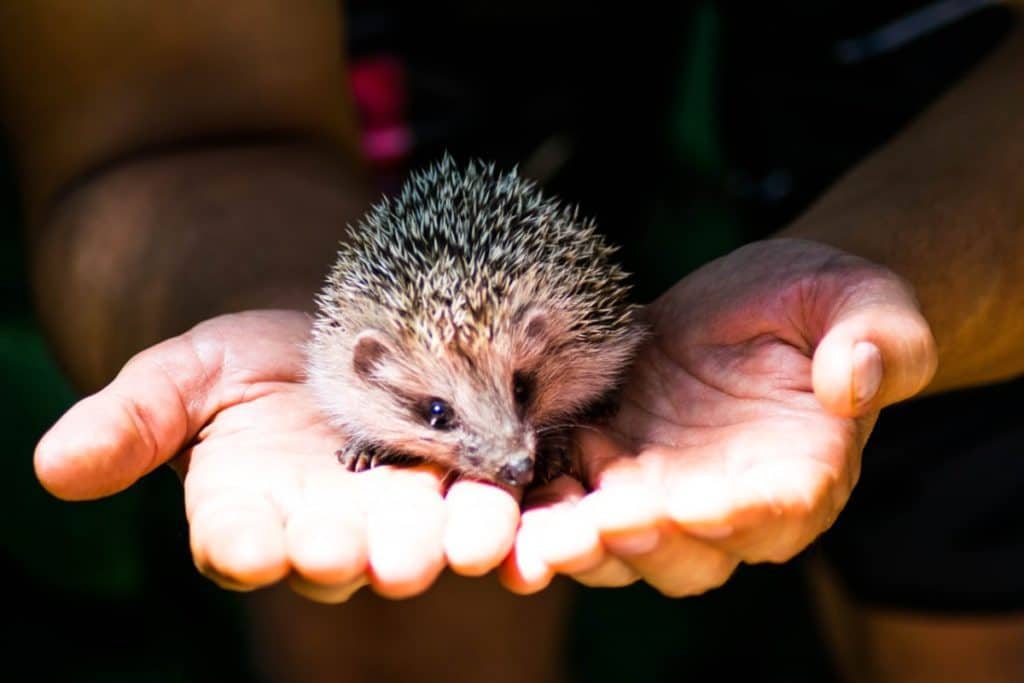
How often should I take my hedgehog out of its cage?
Hedgehogs that are tame to hold will be happy being held as long as you continue handling them daily. You need to reward them with treats for being held too. This way, your hedgehog will need to be held for at least half an hour per day, preferably in two 15-minute handling moments.
How often do I need to clean the cage?
You need to clean their cage every week since they can get messy from poop and pee. There are training techniques that involve toilet training. If you can get them to use a toilet area, this will keep their cage area cleaner.
Can I put my hedgehog with other animals inside the cage?
Don’t put any other kind of animal inside your hedgehog cage, since they don’t mix well with rodents or other pocket pets. Outside their cage, they just don’t seem to have any fear of dogs, cats, or animals that are curious about them. They have spiny quills that protect them if these animals get too close.
Where can I find cool hedgehog cage setup ideas?
The best ideas that come from the internet come from websites like Youtube. They have lots of DIY videos showing you how to create the best hedgehog cage. If you like looking at pictures, sites including Pinterest, Google images, and DIY Wiki sites are good visual sources.
Related articles:
Resources and further reading:
- Hedgehog care and husbandry, Elisabeth A Simone-Freilicher, Heidi L Hoefer

